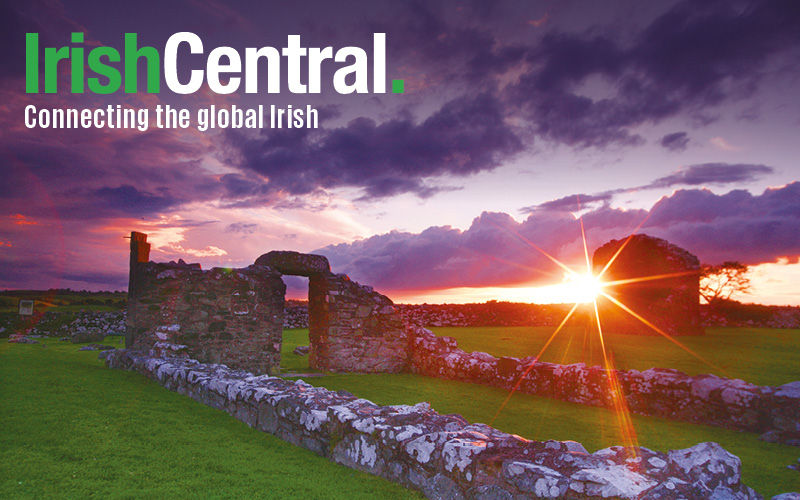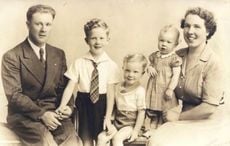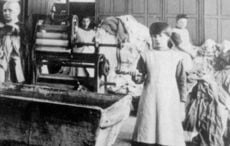I have seen a lot of emotional protest marches in my time, but the most moving of all was the one last week in Dublin by survivors of the notorious institutions that once held thousands of Irish children prisoner and stretched across the country like an Irish Gulag.
The Irish Gulag was a chain of these institutions run by religious orders on behalf of the state that covered every part of Ireland between the 1930s and 1970s -- orphanages, reformatories and so-called industrial schools.
The recent report of the commission that spent almost 10 years investigating what went on in these institutions (the Ryan Report) shocked the country and, as I said here a couple of weeks ago when it was published, shamed us before the world.
The physical and sexual abuse that happened in the institutions over the decades, the deprivation, fear and cruelty suffered, are almost unimaginable now. But this horror was a reality for tens of thousands of Irish children, many locked away from the time they were toddlers up to their teens, and for them there was no escape.
It destroyed them physically and emotionally, leaving them with deep psychological scars after they eventually were released by the system.
The survivors are now in their late fifties or sixties or more, and their burden of shame and guilt (even though they were entirely innocent) kept most of them silent over the years. Many escaped to England, unable to bear to stay in Ireland.
Some of those who remained here gradually found the courage to tell their stories as the terrible truth emerged over the past 10 years. Most kept their heads down, as they had been taught to do in their nightmare childhoods.
But last week it was different. Hundreds of them turned up to protest, and the pain, hurt and anger poured out of them as they marched through Dublin to the Dail (Parliament).
Many were in tears. Some broke down sobbing. They comforted each other as the memories of what they had been through came flooding back.
Along the city streets, people stopped, wiped their eyes and applauded. We all know now what they went through.
Let me give you one account (written by a judge some time ago) of the regime that was in place in just one of the "industrial schools," so-called because they were supposed to be teaching trades or skills to the children who were the inmates. This one was the Fisheries School in the Co. Cork seaside village of Baltimore.
Even in the 1950s and ‘60s, the boys in the Baltimore Fisheries School were not just hungry every day, they were starving. They got so little food they ate raw vegetables and vegetation from the school grounds. They ate raw shellfish they found on the seashore. They scavenged in the dustbins of Baltimore, begging people in the village for food.
Sections of the school buildings had no heating, and the poorly clothed children froze in winter. The toilets were outdoors and dry. The bedding was flea infested and urine saturated. There were outbreaks of scabies.
Boys drank from cracked mugs or jam jars. Hot water depended on the infrequent times a cartload of turf was available, whereupon six boys in succession washed in the same water.
Local people attributed the small size of the children to their diet. Severe physical punishment was an everyday reality. There was gross sexual abuse, including anal and oral rape.
The boys in the Baltimore Fisheries School, according to the distinguished journalist Bruce Arnold, were sustained "at a level that compares with the worst conditions in the Gulag camps in Russia or concentration camps in Nazi Germany."
It was for that reason that Arnold called the book he has just published "The Irish Gulag," and it is a title that is an understatement rather than an exaggeration. Stalin may have been a monster, but at least he did not only torture children like they did in Holy Catholic Ireland.
Arnold's book (available from Amazon and main bookstores) is from Gill & Macmillan, the leading Irish publishers, and it is an important book. It is important because somehow we have to find an explanation for how the Irish State, our proud new Irish Republic, and Irish society in general, permitted tens of thousands of children to be locked up and abused in institutions here over the decades. And this book is the only explanation that we have.
Arnold explains that at the time of independence, the new Irish state inherited a countrywide network of industrial schools from the British. But although in Britain such schools were modernized or closed in later decades, in Ireland they remained virtually unchanged.
They were cruel, even savage places where children were locked up for years, flogged, terrorized, starved, abused and treated like slave labor (another reason the Gulag tag is appropriate).
As Arnold says, the institutions were actually juvenile slave labor camps operated in Gulag style in the service of the religious orders, instead of industrial "schools." There was little or no education.
At the infamous Letterfrack Industrial School in a remote part of the west of Ireland, the boys who worked on the 400 acre school farm were forced to kneel and use their spread out fingers as rakes. If they stood up too quickly to ease their aching backs they were beaten.
In addition to the deprivation, of course, there was the sexual abuse and the floggings, the injuries and the deaths. The huge Artane Industrial School in Dublin even had its own cemetery, and no one knows how many battered boys who subsequently died were secretly buried there. (It was from this school housing hundreds of boys that the famous Artane Boys Band came to play at Gaelic football matches in Croke Park.)
The conditions at Letterfrack or in the Baltimore Fisheries School were shocking, and similar things were happening in dozens of institutions spread all over Ireland. Yet as Arnold points out, the religious orders were getting a capitation payment from the state for each child which was enough not only to feed and clothe them and keep their accommodation warm, but to pay for teachers and recreation facilities.
The amount paid by the state for each child was equivalent to the average earnings of a farm laborer at the time (on which many entire families were able to live).
But the religious orders did not spend the money on the children. Instead the money was siphoned off for use elsewhere, and the children were kept in conditions that were beyond Dickensian.
They froze in winter, were badly fed and clothed and had no amusement apart from prison like yards and fields. Where did the money go?
Another aspect of Arnold's book that is vitally important is one that has not been covered by the Ryan Report or other media investigations, all of which have concentrated on the sexual abuse and the savage beatings. That aspect is the system that provided the institutions across the country with so many children -- around 150,000 over the years by Arnold's reckoning.
In the book Arnold explains that the 1908 Children's Act (which remained law in Ireland even though it was changed later on in Britain) allowed ANY adult to bring a child under the age of 14 before a court and request that he or she be sent to an institution.
This could be done for a long list of reasons (begging, missing school, lacking proper care, parents regularly drunk, etc.) whereupon the judge could send the child away.
Former inmates of the institutions who were small children when they were brought before the courts remember a member of a Catholic charity, or a guard (Irish policeman) or a priest or a member of the Society for the Prevention of Cruelty to Children giving evidence on why they should be locked away.
It seems unbelievable now. But as I said here before, Ireland at the time was a Catholic version of Iran under the Ayatollahs.
If you were a child in a poor family with a father who drank or a mother who found it hard to cope or had "morality" issues, you could be scooped up off the streets and locked away, and there was nothing your parents could do about it. Kids were locked up in institutions when they were toddlers and did not emerge until they were 16.
That was our Holy Catholic Ireland at the time. If the local Catholic do-gooders decided that your parents weren't up to the job, you could be sent to the Gulag, for your own good.
And Arnold's book does not stop there. It goes on to show that the way the state has dealt with the emerging scandal over the past 10 years has been aimed more at protecting itself and protecting the religious orders than it has been at providing genuine reconciliation and redress for the victims.
Arnold shows how the legal framework for the Commission to Inquire into Child Abuse (which produced the Ryan Report) was designed to prevent examination of the system that put the children into the institutions in the first place. And he shows how the Redress Board was imposed on victims primarily to lessen the cost of claims and to make the process statutorily secretive.
It was Arnold who first exposed the outrageous indemnity deal done with the religious orders to limit their contribution to €128 million when the real cost to the taxpayer is now going to be far in excess of €1 billion.
Apart from the appalling sexual and physical abuse, Arnold details the utter everyday misery of the lives of the children who were the prisoners of the system, the lack of food, clothing, warmth and medical care but also the total lack of affection that is essential for any child to develop self-esteem.
The result was tens of thousands of children who were damaged beyond repair. Their lives were ruined.
Now middle-aged and elderly adults, they still bear the pain. It was there for all to see on the march of the survivors through Dublin last week.




Comments